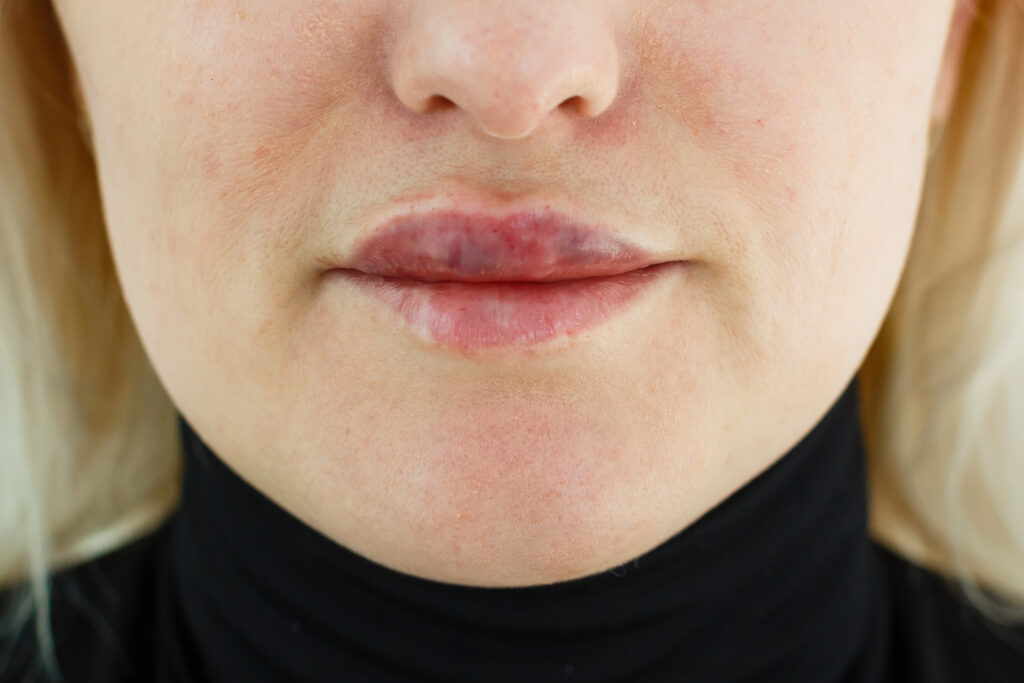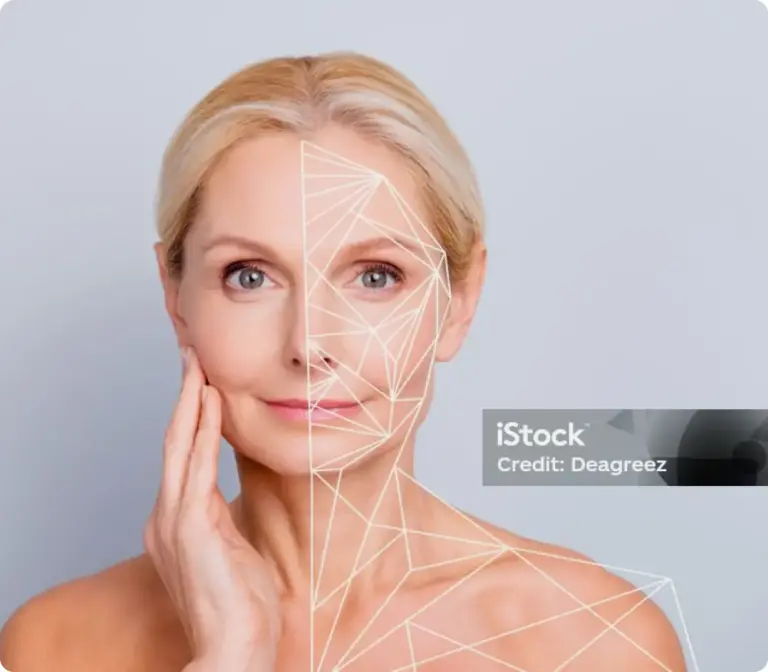Complications can occur during or after treatment by any practitioner. While serious issues are rare, risks are inherent in all treatments.

In medicine, a complication is an unexpected issue that arises as a result of a procedure, treatment, or illness. It is called a complication because it complicates the situation. After procedures, common reactions may include bruising, swelling, tenderness, mild pain, redness, and lumpiness of filler immediately after treatment. These reactions can be mistaken for complications, let’s now delve into the topic of complications for neurotoxin, dermal fillers, lasers/device treatments and fat reduction.
It is important to avoid rubbing, massaging the treated areas post wrinkle treatment to prevent the botulinum toxin from migrating to other parts of your face, leading to temporary facial weakness or drooping.
Drooping eyelids, also known as eyelid ptosis, represent a recognized complication associated with neurotoxin injections. The incidence rate, as documented in the literature, typically ranges from 1% to 5% among patients undergoing these procedures.
While rare, there is a slight risk of the toxin spreading beyond the treatment area, resulting in botulism-like symptoms like breathing difficulties, swallowing issues, muscle weakness, and slurred speech. It is important to be cautious and seek medical attention if any of these severe symptoms occur post-treatment.
Botox may impact heart function, causing rhythm problems or heart attacks, especially in individuals with underlying heart conditions. Those with nerve or muscle-related disorders should exercise caution when receiving Botox injections, as the medication can potentially exacerbate existing conditions. It is advisable to discuss any such concerns with a healthcare provider before undergoing Botox treatment.
One of the primary advantages of hyaluronic acid fillers, in addition to their natural aesthetic when administered, is that they can be effectively dissolved using a specialized solution in the event of an adverse reaction or if the individual is dissatisfied with the results.
Injecting hyaluronic acid filler into an artery or vein can lead to vascular compromise, tissue necrosis, or vision loss.
Minimizing the risk of vascular accidents requires knowledge of anatomy, training, and proper technique.
Precautions such as aspiration before injection and using small needles are recommended. Arterial occlusions show immediate severe symptoms, while venous occlusions can be less severe.
Treatment for vascular occlusion often involves high dose pulsed hyaluronidase protocol.
Allergic reactions to fillers can occur immediately or days after treatment, with symptoms like swelling, redness, itching, and rash.
Practitioners must be able to recognize and treat anaphylaxis. Infections from fillers can be acute or delayed onset, requiring antibiotics and possible incision and drainage.
Nodules from fillers can be inflammatory or non-inflammatory, with early onset nodules typically painless and non-inflammatory.
Granulomas can form in response to fillers, sometimes requiring hyaluronidase or antibiotic therapy.
Injection-related events
Infection: May exhibit combination including lump, erythema, tenderness, or discharge.
Pain: The initial indication of minimal pain that subsequently followed by intense pain could be first sign of complication.
Bruising: Bruising is a common occurrence following dermal filler injections; however, concern should arise in the event of late-onset darker discoloration or blanching accompanied by a sudden increase in pain that exceeds the typical discomfort associated with such treatments.
Erythema: Transient skin erythema immediately after injection is normal. If it lasts more than a few days, it may indicate a hypersensitivity reaction but should be distinguished from infection by checking for fever.
Therapeutic lasers are used for various purposes including vascular coagulation, pigment ablation, facial rejuvenation, tissue cutting or ablation, and hair removal.
Complications from laser treatment will be discussed broadly, but each laser has its own unique challenges and risks.
Proper technique, along with selecting the right patient and device, can help mitigate complications from laser surgery.
Laser treatments may lead to discoloration of the skin, lightening or darkening with that latter being most common.
Darker-skinned individuals are at higher risk.
Hyperpigmentation can be treated with hydroquinone, while hypopigmentation is harder to treat and may require multiple methods.
Sun exposure should be avoided before and after treatments to reduce the risk of dyspigmentation.
Burns can occur from overheating tissue due to excessive heat or insufficient cooling during laser treatments.
Proper patient selection and testing settings beforehand can help prevent complications.
Signs of excessive heating include graying of tissue, which should prompt reevaluation of settings and cooling systems.
Burns can lead to complications like scarring and discoloration. Immediate cooling and topical treatments can help manage burns from laser therapy.
Infections are common after laser treatments, especially ablative resurfacing, due to skin barrier disruption. Herpes simplex virus (HSV) reactivation is common, requiring antiviral prophylaxis.
Bacterial infections can also occur, with Staphylococcus aureus, Pseudomonas aeruginosa, and Escherichia coli being common pathogens.
Antiviral and antibacterial prophylaxis may be necessary, with prompt treatment essential to prevent scarring and superinfection.
Patients undergoing laser treatments, especially ablative resurfacing, should be aware of the potential risk of scarring.
Scarring can result from burns, abnormal healing, infections, or excessive treatment. Caution is needed, especially for vascular lesions and lesions with limited blood supply. Prompt treatment is recommended if scarring occurs. Treatment options include steroids, silicone gel, or sheeting. In some cases, laser therapy may be used to treat scars caused by previous laser treatments.
Lasers can cause eye injuries to both patients and healthcare professionals. Eye protection should be worn to prevent damage from direct or reflected beams.
Different lasers target different structures in the eye, leading to various types of damage.
Symptoms of a laser injury include flashes of light and decreased vision. Prompt treatment is necessary to prevent permanent blindness.
These complications encompass uneven fat removal, skin irregularities, and discoloration. For instance, liposuction may result in skin exhibiting a bumpy, wavy, or wrinkled appearance. Additionally, fat-dissolving injections have the potential to lead to skin ulceration and scarring.
Any procedures — such as lifts and tucks — are surgeries and therefore come with certain risks, although relatively uncommon. Risks can include:
With nonsurgical options, risks are much more limited and include:
-Hives or rash.
-Pain or soreness.
-Red skin.
-Swelling.
-Unsatisfactory results and need for repeat sessions.
-Paradoxical adipose hyperplasia is an uncommon complication associated with CoolSculpting, characterized by an unexpected and paradoxical outcome: the overgrowth (hyperplasia) of adipose tissue. This complication may manifest between 8 and 24 weeks following the procedure, resulting in the hardening and noticeable enlargement of the treated area.
Kybella is generally considered a safe procedure, there exists the potential for less common adverse effects, such as nerve damage, which could significantly impact one’s quality of life if they occur.
These complications may include facial nerve damage, leading to asymmetrical smiles, facial muscle paralysis, or other related issues.
Each individual presenting with complications requires a thorough assessment by a qualified professional to determine the most appropriate course of action. Here are some common treatment options for that may be implemented.
Treatment for neurotoxin-induced ptosis aims for symptomatic relief until the neurotoxin effects diminish. Eye drops like apraclonidine 0.5% and brimonidine 0.33% gel can temporarily elevate the eyelid by 1-2 mm.
Hyaluronidase, like Hylenex, is injected to dissolve hyaluronic acid dermal fillers. It can be used to remove old filler before new treatments or to address filler migration and nodules.
Pigmentary complications resulting from laser treatments can be effectively managed with lightening agents such as hydroquinone or through the application of additional laser therapies specifically targeting hyperpigmentation.
If you are unable to see the provider who performed your treatment or have lost confidence in them, it is advisable to seek out a specialist experienced in managing complications.
